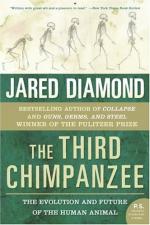
|
| Name: _________________________ | Period: ___________________ |
This quiz consists of 5 multiple choice and 5 short answer questions through Chapter 14, Accidental Conquerors.
Multiple Choice Questions
1. If a woman continued to deliver children as frequently as possible until death, what would happen to her?
(a) She would have a difficult time raising her children.
(b) She would be pregnant almost constantly for many decades.
(c) Her death would nearly positively result from childbirth.
(d) She would do nothing but reproduce.
2. How are humans unique among primates?
(a) They perform sexual acts frequently.
(b) They are both social and monogamous.
(c) The are isolated and monogamous.
(d) They are both social and polygamous.
3. Why can men supposedly enjoy extra-marital sex with a minimum of consequences?
(a) Because they are more dominant.
(b) Because they have no risks of contracting diseases.
(c) Because an impregnated secondary sexual partner can simply be abandoned.
(d) Because society encourages them to have multiple partners.
4. With what does the chapter conclude?
(a) The differences between humans and chimps.
(b) Why chimps should not be classified as Homo.
(c) A discussion about the similarities between humans and chimps.
(d) An ethical discussion about the implications of classifying chimps as Homo.
5. What does the author note about studies done on woodpeckers?
(a) Woodpecker traits are found plentifully in other bird species and most of the traits necessary to be a woodpecker have come together only once during evolution
(b) Woodpecker traits are only found in other bird species.
(c) Woodpecker traits are found plentifully in other bird species and yet all of the traits necessary to be a woodpecker have come together only once during evolution.
(d) Woodpecker traits are found only slightly in other bird species and yet all of the traits necessary to be a woodpecker have come together only once during evolution.
Short Answer Questions
1. What is an optimal organism?
2. When do chimps, humans, and gorillas break off from the remaining higher primates?
3. What does the author say about the numerous scientific approaches to aging that have been proposed and numerous theories that have been suggested?
4. Are smoking, drinking, and drug use universal human traits?
5. Why do many scientists believe human infants learn language?
|
This section contains 474 words (approx. 2 pages at 300 words per page) |

|




